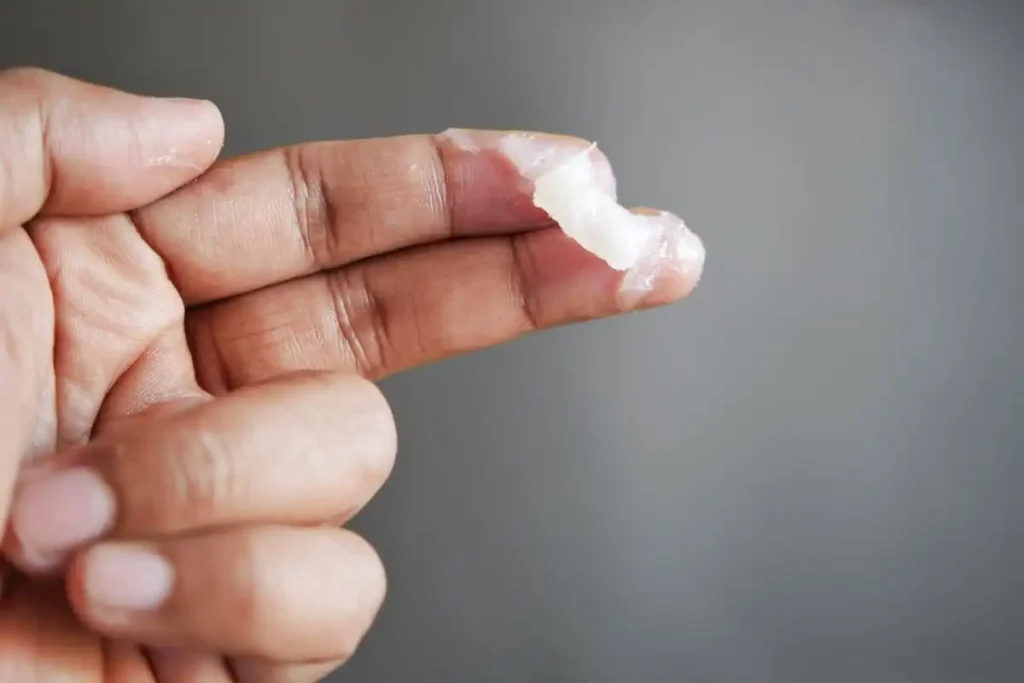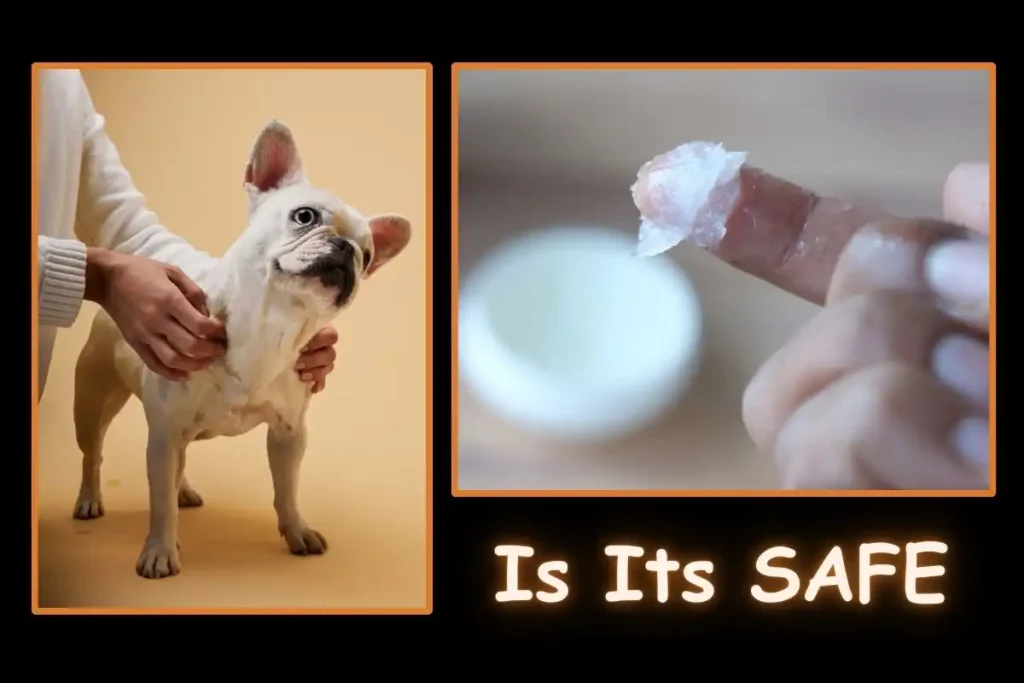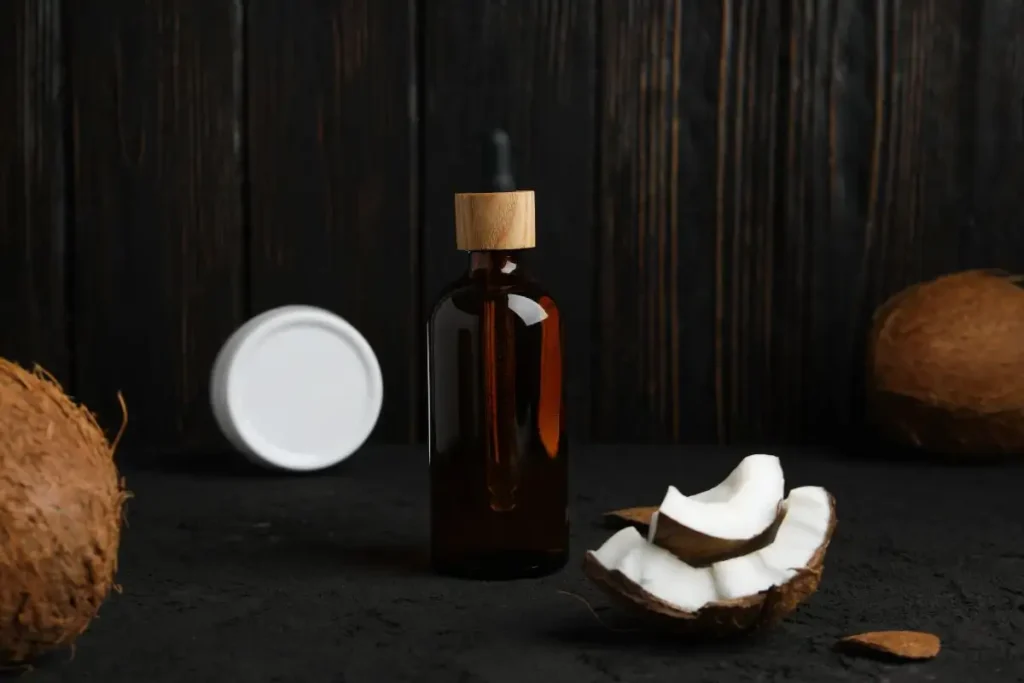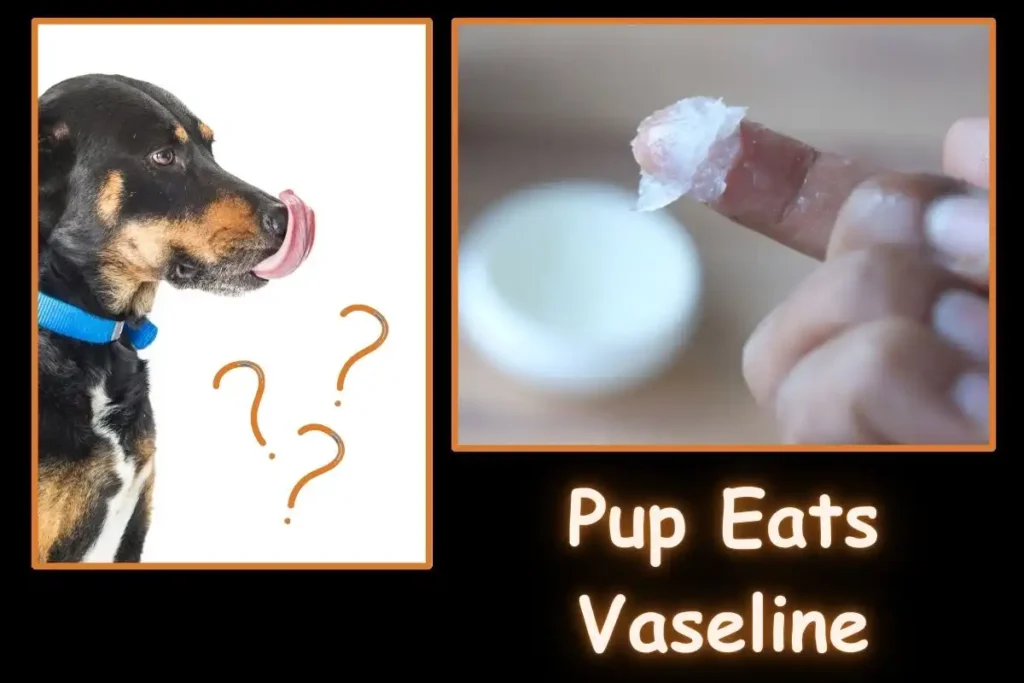Can I Use Vaseline on My Dog? Here’s What You Need to Know
Introduction: Can I Use Vaseline on My Dog?
As a pet owner, you might find yourself wondering, “Can I use Vaseline on my dog?” It is very natural especially when you notice that your pet has some dry skin or cracked paws. Vaseline or, petroleum jelly is a product that most homes have in stock. It is perfect for men but safety on dogs is another issue.
It may seem that using mineral oil jelly for dogs is a quick solution to a problem at hand, but there are serious precautions to be taken before doing it. Many people who own a dog have heard of Vaseline work wonders on the skin of their companions, but it is also essential to know if it is safe or at all effective for our furry friends.
This article will review how to use Mineral Oil Jelly on dogs without causing any harm, the risks associated with the use of paraffin jelly, and better options to keep your Four-legged friend comfortable and safe.
Understanding Vaseline and Its Common Uses

Vaseline, which is a trade name for petroleum jelly, is basically a thick oily mixture of different mineral oils and waxes. Its most common function, creating a waterproof layer on the skin to help moisture retention and prevent dirt from entering, is one of the many uses it is also widely known for.
Most people use it for many reasons, such as treating chapped skin, putting it on minor burns and scratches or some would even use it as a lip care product during winter.
A point of contention among canine owners is the following: can you put Vaseline on dogs? Some companion owners may lash out to Soft Paraffin to cure their canines’ dry/cracked paw pads or chapped noses.
Most of these doggy owners think it is effective since Vaseline can hydrate and shield the owner’s pets from ‘dry and sensitive places’. Nonetheless, one must determine whether or not such a commonly used household object is safe for our Four-legged friend.
Although Vaseline seems to be a quick fix for an injured doggy, one must know how it will affect the dog’s health. How much care should be maintained during the application of its products?
Is Vaseline safe for dogs? While it is not poisonous, it brings certain risks to its users especially when the user is naïve as the user happens to be a kitten and swallows it. We now have to look, concerning the application on your hound, the benefits as well as the dangers that may follow the retch.
Check out our PAWSOME Merch.
Are you worried about the oral health of your dog then you must read this piece of content that discusses Coconut Oil for Dogs’ Teeth in detail.
The Safety of Vaseline for Dogs

How Safe is Vaseline for Use on Poochs are concerned about the safety of using Vaseline on them. So, is Vaseline safe for dogs? In most cases, Vaseline is nontoxic, meaning it will not be poisonous to a pup who decides to lick it from the skin. Nonetheless, there are still some important points to consider.
Although there is nothing dangerous with petroleum jelly, when applying it to the skin, it has a thick border that traps dirt and other unwanted substances. When used on a cut or sore, this may cause infection or irritation.
Also, yes, what happens when a dog eats too much Vaseline? There are other side effects that may arise which are associated with consuming sustained excessive amounts of Vaseline. This ushers in the possibility that when puppies eat mineral jelly it could be quite safer. While inane ingestion of a small amount may not cause dramatic effects, proper supervision of the Companion animal would be prudent so as to prevent an undesirable turn of events.
In addition, some canines have allergies to petroleum products. After using Vaseline on dogs skin, if you notice signs of irritation redness, swelling, or excessive licking stop using it and turn to an animal doctor.
Do you own a Frenchie who has an aggressive personality and you don’t understand that Why is my French bulldog so aggressive? then we have a complete article on that topic too which you may find helpful.
Potential Risks of Using Vaseline on Dogs
Even though mineral jelly may come in handy for some small skin ailments, there are risks that we all as Four-legged friend owners need to know about when it comes to using it on our doggies. Firstly, although is vaseline toxic to dogs yes or no is rest assured that it is not; however, the consequence of its application may depart from the normative structure.
The first thing that comes out as a fundamental problem is the ingestion of the substance. Sometimes, lassies lick the petrolatum off, and this can cause an upset stomach.
Concerns on what happens if my dog eats Vaseline? are common and everyone who has ever been worried by a sick puppy knows this. Many times it may cause little trouble if a small quantity is swallowed but in rather many cases it is more likely to produce nausea, diarrhea, or vomiting. Under all those situations where you notice these symptoms for example after your pooch has licked petrolatum then you must ask your animal doctor.

Another danger involves the risk of skin sensitivity. Vaseline is advantageous in applying on the dog’s nose or the paws for instance, but rather they trap dirt and even bacteria. These in turn lead to infections of the skin or aggravation of an already present skin ailment.
When it comes to the question, is Vaseline harmful to dogs if used too much, yes it is harmful when the skin gets dirty or is inadequately wiped clean before the application of this cosmetic.
Also, some puppies can be allergic or sensitive to petroleum jelly. If you notice redness, bumps, or any unusual licking after putting in mineral jelly on her wounds, then you should medicate.
If you are curious about French Bulldogs’ behavior with cats you may consider this blog post Are French Bulldogs Good with Cats?
Check out our PAWSOME Merch.
Common Reasons People Use Vaseline on Their Dogs
Many Domestic animal owners have used paraffin jelly on their dog’s skin to soothe small skin ailments. So why do people use paraffin jelly on their pups? Let us look at some of them.
Dry and Cracked Paws
Dry sore and cracked paws are one of the earliest conditions in which petrolatum has been put us into practice. In our winter days when these canines do long walks on cement rough surfaces, their paws are subjected to soreness and chapping. Vaseline would help in softening and protecting the particular pads more so making the pup comfortable.
Red irritated moist skin sparingly
Another use for petrolatum which the owners will be searching for is to get relief for chapped or dry noses. Just like human beings, doggies can also suffer from chapped noses, by paying attention to the fact that they are outdoor companion animals.
That is to say; this product (soft paraffin) is occasionally used in such a way that it seals the moisture within.
Scratches and scrapes with no bleeding
Some, if not all, canine guardians assume that it can come to the rescue in order to prevent or protect the surface of the skin from minor cuts and scrapes. In like manner, it is believed to create one; a particular barrier that retains moisture and can be said to facilitate the healing process.
However, it is general knowledge that any surface, be it an injury or otherwise, has to be cleaned before any such procedure is performed.
Preventing sore lesions
Soft paraffins are also used for this reason by certain companion owners to protect the pooch from any form of rub or chafe, especially for those worried about the pooch’s harness or collar confining them to the same position.
Putting a minimal amount of the substance on parts that rub and cause discomfort may be less warming up to the dog.
Although these applications explain some of the reasons why people will be tempted to apply soft paraffin on doggies, it is important to bear in mind the potential disadvantages we previously reviewed.
If you wish to obtain successful results on how to heal your pup’s skin, looking for other methods may not be the best way. We will talk about these methods in the next section to keep your fluffy friend fit and content!
Does your canine suffers from constipation then you might find this blog post very help that covers Coconut Oil for Dog Constipation. It is a Natural Solution for Your Furry Friend.
Check out our PAWSOME Merch.
Tips for Using Vaseline on Your Dog’s Cracked and Dry Paws
If you choose to use paraffin jelly on your canine’s damaged and dry paws, you have to do it with caution. In such a case, here is some guidance on how to avoid complications while ensuring the application is complete and correct.

Do Clean the Paws First
It is best to put Paraffin Jelly on your pup’s cracked paws when they are clean and dry. Wipe off any dirt, salt, or debris that may have built up, particularly in winter walks, with a damp towel or safe wipes. This should reduce the chances of irritation and infections.
Apply Vaseline Sparingly
It should be avoided in any excessive quantities. It should be introduced in small quantities and then deeply massaged within the damaged parts of your doggy’s forepaws. This will offer moisture but others limit the greasiness of the feet, which usually would store odors.
Monitor Your Dog
There are times when after the application of Paraffin Jelly, the owner has to watch over the canine. In some cases, some dogs tend to lick it out. If your furry friend begins to lick it, then you should probably put on some anti-barking collar on your puppy.
Save It For Later
Try to use as little as possible throughout the day. Use of soft paraffin jelly too much can predispose one to skin allergy or skin pore blockage. It is better to use ointment when necessary, such as when coming back from a walk or in dry periods.
Check That There Are No Signs of Irritation
Always examine your furry friend for signs such as swelling or relation and redness. If you notice these symptoms, do not use soft paraffin jelly any longer and consult with your doctor who can suggest other ways to relieve this problem.
Consider Alternatives
Though petrolatum does its function, it may not be very safe, so other options meant for canines could be better checked out. Many of these shields do use balms and creams for puppies that aim to relieve dry forepaw conditions without any dangers of petroleum.
With these preventive measures, the risk of your pooch’s feet getting dry and damaged is minimal.
Safer Alternatives to Vaseline for Dogs
Though it may sound rash to support Vaseline pet use on your doggy’s damaged paws or dry skin, the truth is that there are specially formulated options available that come with many benefits.
These alternatives do not involve the use of petroleum jelly and hence are safer and effective. Some of those include the following:
Balm for Puppies
Cat or dog supplies available in various brands include balms made for canines. Most of these products include natural ingredients such as coconut oil, shea butter, and beeswax. They do not only relieve rough skin but also prevent damage to the foot due to extreme temperatures.
These are normal human balms but make sure they are dog-safe and check ingredients so that none is harmful.
Coconut Oil

A great moisturizing compound in pooch is coconut lube. It is safe orally as well as externally and helps treat rough skin, a dry and chapped nose, and dry damaged paws. All you need to do is take a small quantity of this cream and apply it to the problem areas. If your furry friend licks this off, it is safe too!
Olive Oil
Olive oil is as effective as coconut-oil and helps in the treatment of rough skin. It can be used both orally and topically. You can also mix in a little into your canine’s kibbles or wet food to give him moisture. Just don’t go overboard with this, too much of anything especially fats has its consequences.
Aloe Vera Gel
This herb is quite common with Furbabies and is also believed to have a calming effect. It is effective in treating superficial wounds and hydrating dry patches. Make sure to use pure Aloe Vera gel as the flavored gels may contain sugar and other ingredients which can be harmful to your doggy.
Ointments from Veterinarians
Whenever the above-mentioned treatments fail to work or if your canine has dehydrated skin or other skin conditions that do not go away, always see a vet-doctor.
Alternatively, they may be able to suggest or even order specific ointments that are safe for your furry baby. Typically, these products are enhanced and aimed at solving a problem that is specific to your pooch rather than the ones available in stores.
Protective Dog Boots
For owners whose dogs tend to walk on very rugged terrain or out in the biting cold all the time, it’s wise to buy some protective dog boots. Such boots would protect their soles from exposure making them not damage or dry up without using ointments.
These less severe measures achieve alleviation of dry skin and soles for your pug with no beauty lotion needed. Care of the skin of a pug and skin regarding the treatments to use is essential and therefore you should always seek the medical advice of your animal doctor anytime any doubts arise.
What to Do If Your Pup Eats Vaseline

Most canine owners may find it hard to digest the fact that their dog has chewed on the petrolatum container. However, what do you do when your dog consumes Petroleum-Jelly or something that resembles Vaseline? Here’s what is important to know if your dog ate Petroleum-Jelly:
Evaluate the Amount of Vaseline
In the case of ingestion of mineral jelly, the main concern becomes the level of consumption. If whatever they consumed was small, looks like your dog is likely to experience mild bouts of Gastrointestinal upset, anorexia, vomiting, etc in some cases even loose motions. But if the quantity of daubed in the mouth is excessively large, it can be more serious.
Watch for Any Symptoms
You should also monitor your furry friend for any unusual behavior or signs of discomfort; he/she should be watched over for such symptoms as. Symptoms to look for include:
- Vomiting
- Diarrhea
- Lethargy
- Loss of appetite
Once you detect any of these symptoms, follow it up.
Reach Out to the Vet
There might be various symptoms to look for but if your dog exhibits any of them then it is most wise to contact your doctor in particular if you are not sure how much mineral jelly was swallowed.
In some situations, your Animal Doctor (Vet) may insist that you bring your pooch to the clinic for a checkup.
Don’t Induce Vomiting Without Guidance
You may be if Fournier has a nasty case of Petrolatum and you are tempted to make her puke to relieve her of it you should refrain from this without seeking a vet.
For example, in some cases, it is harmful to induce puke as it will create more risks like in the case of Petrolatum, it is very tough to puke out.
Ensure There Are Available Fresh Water For The Dog
Check to see that your canine is provided with clean drinking water. This should help ease some of the gastrointestinal upset and provide a reason for your pet to drink. It is also critical to do the same thing for your doggy whenever there is retch or diarrhea.
Prevent Future Incidents
In order to prevent similar occasions from happening, ‘Vaseline’ and every other potentially modified damaging item ought to be kept out of the reach of the hound. It is critical to protecting your house while making sure Four-legged friends have access to it, so as to escape injuries from pets.
When to Consult Your Vet

Understanding when it is necessary to seek the help of an animal doctor is a step that every dog owner should take to guarantee their canine’s health. While using soft paraffin on your furry friend may not seem serious, there are some instances where a vet’s attention is mandatory.
Here’s a guide to help you determine when to reach out to your vet:
Signs of illness after ingestion of Vaseline
Some doggies may eat or taste petroleum jelly and develop worrying changes after that such as retch, diarrhea, and refusal to eat. Your vet should be notified anytime there are concerning changes to your dog after ingestion of white petrolatum. They can give guidance based on your doggy’s condition and work out if they need to take any additional measures or recommend a visit to the vet.
Skin irritation or Allergy
Beware; if you happen to experience any signs of irritation like redness, or swelling or if the area keeps being cleaned up and licked, there is no doubt a non-human animals should be consulted. If white petrolatum is applied on the skin and there are side effects instead of healing, the animals’ doctor needs to be contacted to get other safer remedies.
Persistent Skin Issues
When a canine has rough skin and flaws on the nose or forepaws for instance, or they have a runny nose that seems to just last forever, it may be of help to seek the help of a non-human animal doctor. They are in a position to understand and alleviate the root cause of the problems your furbaby is facing and find the right solutions.
Behavioral Changes
Unusual behavioral changes are common in Four-legged friends. A good example of these includes sudden restlessness, uncontrolled lethargy, and poor consumption of food or drinks. One must go to the veterinarian because these changes indicate it is serious.
Uncertainty About Safe Products
Or if sorry you really are not up for allowing white petrolatum or any other such products used on your doggy. Alternatively, the doctor may provide this information to you that is related to your canine’s requirements.
Regular Check-Ups
Speaking of health, you ought to go for regular check-ups with the veterinarian even when the hound appears to be in perfect health. Seen as such, proper and timely examinations will see no preventable diseases cross your Four-legged friends’ boundaries and put it on the best state possible.
Conclusion – Opting for Safe Actions for Your Dog
To sum up, as far as the skin care of your dog is concerned, there are certain precautions that should be understood and practiced. You may be asking yourself, “Is Vaseline harmful to dogs even though it saves people?”
The reasons for that are simple – Vaseline is not poisonous to dogs but there are a lot of risks that come with the practice in a case when the canine absorbs it in its mouth or there is skin contact with the substance.
For the vicious application of mineral oil jelly that is detrimental to most doggies, there are better alternatives that are designed in a way that they are safe for them. Luckily, there are quite a few natural approaches to treat dry damaged pads without the associated dangers.
Moreover, it must be borne in mind that in any case regarding your hound’s health, you should seek advice from a doctor, especially if it concerns diet-related problems such as the consumption of mineral oil jelly.
Be mindful that the reason as to why a pooch is healthy and happy also lies shoulder to your attentive care. You can make your furry companion live a healthy and comfortable life by remaining updated with the latest and best products meant for them. Most importantly, do not compromise their health and abide by the rules given that you notice something abnormal.
In making these safe selections, you not only spare your dog from any possible injury but actually improve their quality of life. Be watchful, and you will be rewarded by your furry friend with joy and jumps of enthusiasm.
Sources







